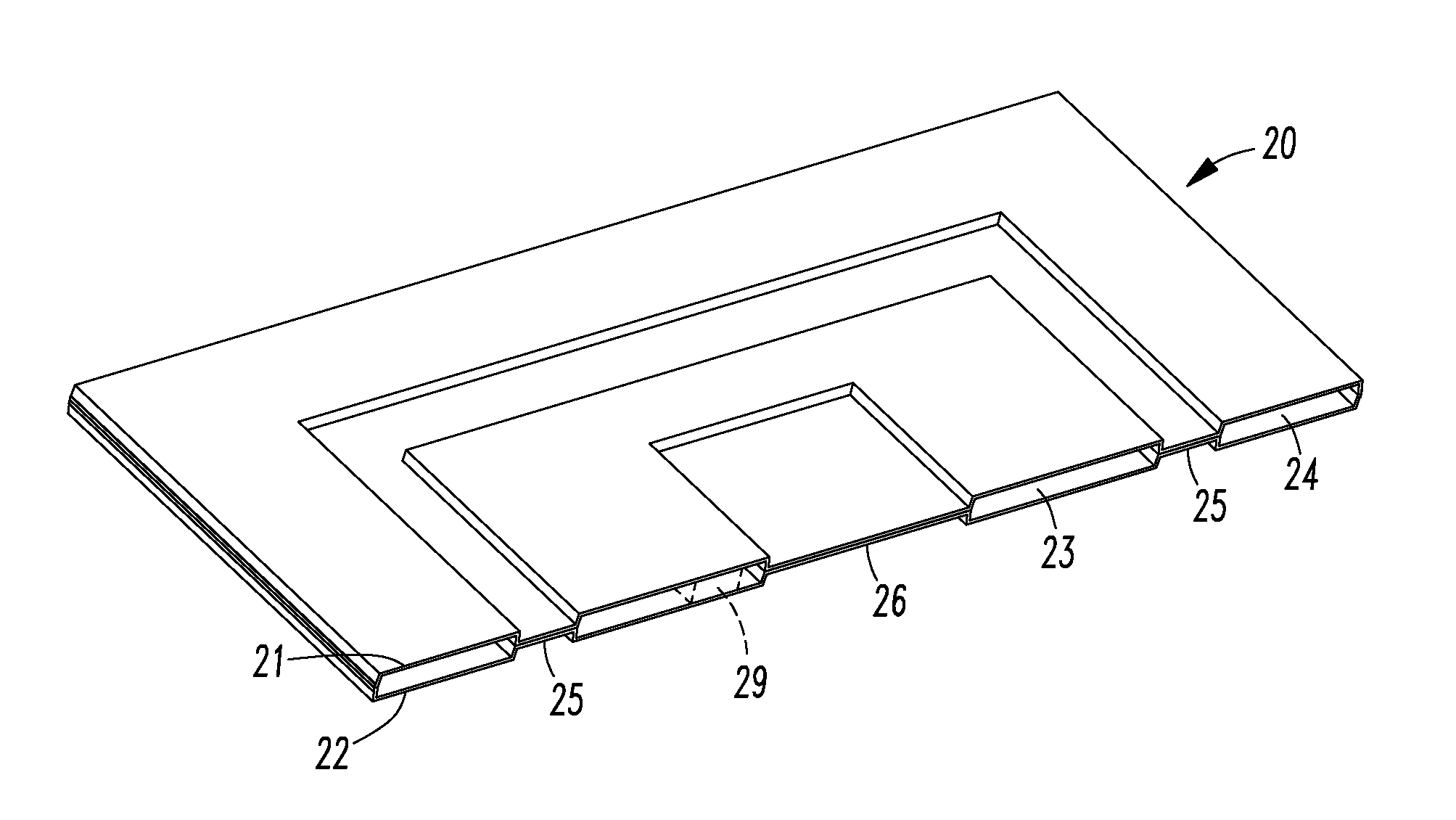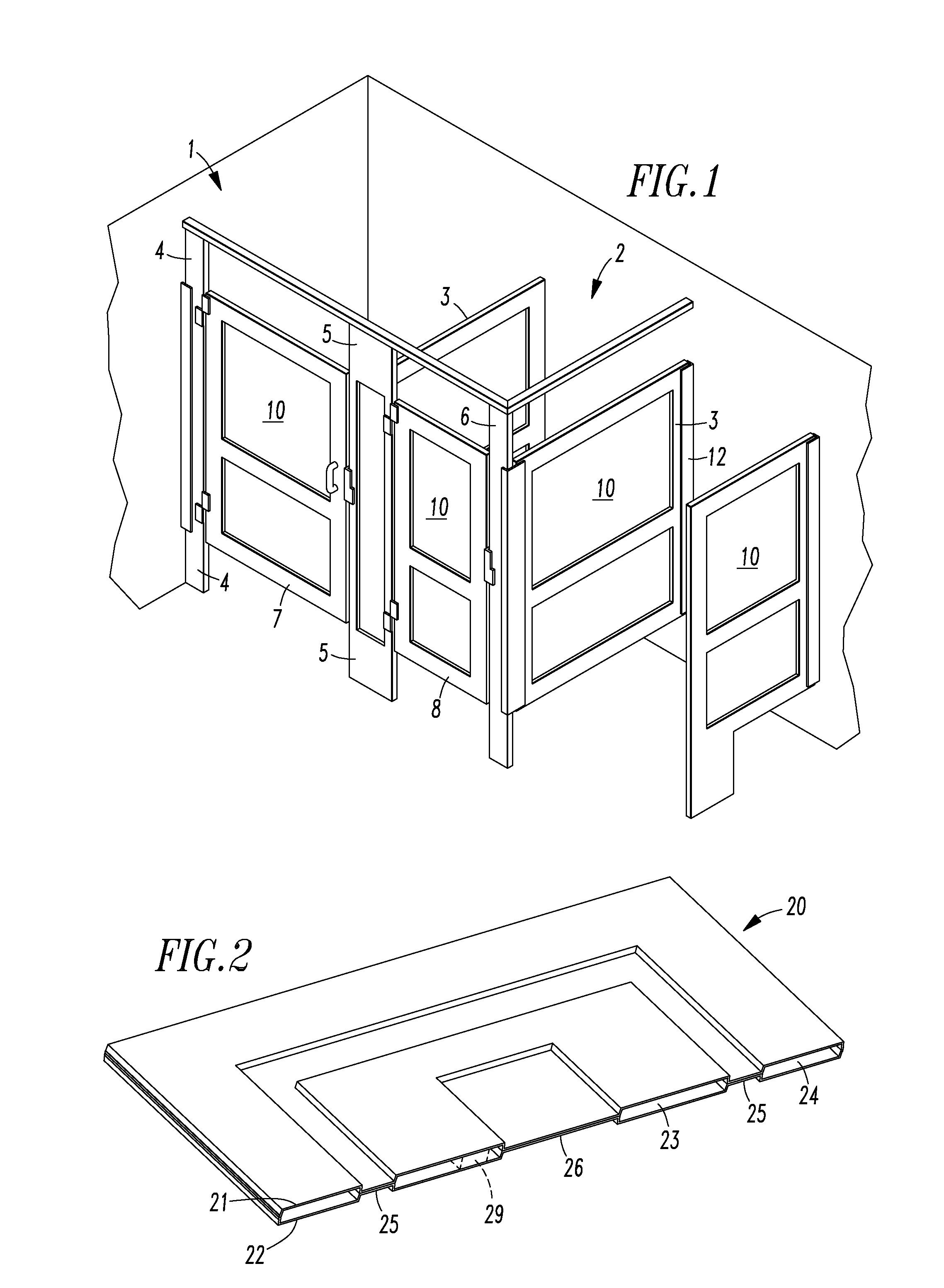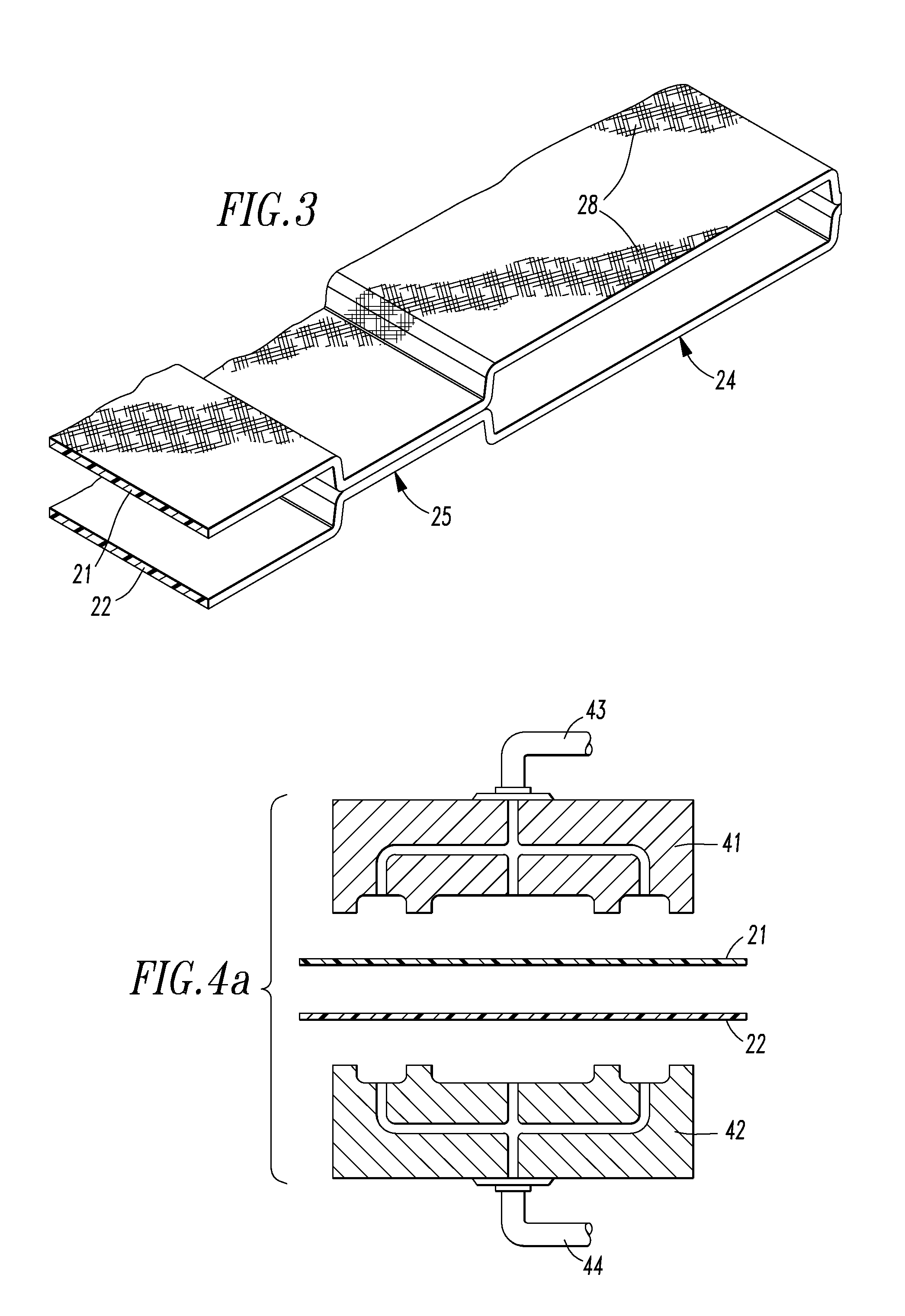Thermoformed or Molded Partition
a technology of partitions and molded parts, applied in the field of partitions, can solve the problems of easy scratching of finish, easy rusting, corrosion and vandalism, and easy damage to metal, and achieve the effects of easy cleaning, strong bonding, and anti-graffiti protection
- Summary
- Abstract
- Description
- Claims
- Application Information
AI Technical Summary
Benefits of technology
Problems solved by technology
Method used
Image
Examples
Embodiment Construction
[0022]Bathrooms in public buildings and other locations often have several toilets and may have several urinals each mounted against a wall of the building. A partition is provided on either side of each toilet. These partitions are attached to the wall at one end and to a post at the opposite end. A door is hung from and between the posts. The door is usually made from the same type of fabrication process as is used for the partitions. Urinals are often separated by a partition attached to the wall between adjacent urinals. Similar partitions may be used in showers, dressing rooms and even desk cubicles.
[0023]FIG. 1 illustrates a portion of a bathroom having two toilets and two urinals. Partitions and doors are provided to define two stalls 1 and 2. Partitions 3 extend from the wall on either side of the second stall. The first stall 1 is defined by a wall of the building and the partition 3 which is parallel to that wall. Posts 4, 5 and 6 are provided to carry the doors 7 and 8 fo...
PUM
| Property | Measurement | Unit |
|---|---|---|
| weight | aaaaa | aaaaa |
| perimeter | aaaaa | aaaaa |
| density | aaaaa | aaaaa |
Abstract
Description
Claims
Application Information
 Login to View More
Login to View More - R&D
- Intellectual Property
- Life Sciences
- Materials
- Tech Scout
- Unparalleled Data Quality
- Higher Quality Content
- 60% Fewer Hallucinations
Browse by: Latest US Patents, China's latest patents, Technical Efficacy Thesaurus, Application Domain, Technology Topic, Popular Technical Reports.
© 2025 PatSnap. All rights reserved.Legal|Privacy policy|Modern Slavery Act Transparency Statement|Sitemap|About US| Contact US: help@patsnap.com



